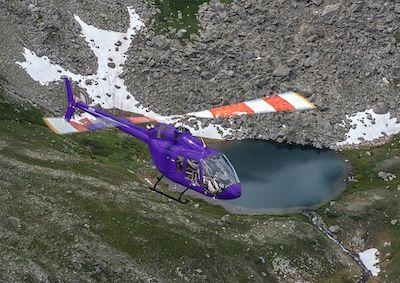Tue, Dec 03, 2019
Outlines Requirements For Crash-Resistant Fuel Systems, Seats And Other Structures
The FAA has published a tool kit for helicopter operators outlining requirements for crash-resistant systems and structures that go into effect in April, 2020.

The agency says that helicopters equipped with crash resistant fuel systems, crash resistant seats and structures provide the highest level of protection for pilots and passengers. A crash resistant fuel system increases the likelihood of surviving a helicopter crash due to a reduced threat of injuries from fire. Crash resistant seats and structures increase the probability of surviving the initial collision from an accident.
In the FAA Reauthorization Act of 2018, Section 317 prohibits helicopters manufactured after April 5, 2020, from flying in U.S. airspace unless certified with a crash resistant fuel system.
Crash resistant fuel systems increase safety for occupants by decreasing or delaying a post-crash fire. Systems that meet the FAA’s regulatory requirement minimize fuel leaks and lessen fuel ignition sources. Crash resistant fuel systems are required for all helicopter models that were certified after 1994. However, the requirement did not apply to newly built helicopters if the original design was certified before 1994. Most newly built helicopters continued to be those certified before 1994. As a result, nearly 25 years later, a low percentage of U.S. helicopters (about 15 percent) meet the regulatory requirement.
Similar to fuel systems, the design requirements for crash resistant seats and structures also improve survivability of a crash. They absorb a greater amount of the crash energy and they can prevent an occupant’s head from hitting the interior of the helicopter.
Due to the FAA regulatory requirement, all helicopter models certified after 1989 must have crash resistant seats and structures. However, if the original design was certified before 1989, the regulatory requirement does not apply. As a result, 30 years later, a low percentage of U.S. helicopters (about 10 percent) meet the regulatory requirement.
(Source: FAA. Image from file)
More News
Aero Linx: Model Aeronautical Association of Australia MAAA clubs are about fun flying, camaraderie and community. For over 75 years, the MAAA has been Australia’s largest fl>[...]
Touchdown Zone Lighting Two rows of transverse light bars located symmetrically about the runway centerline normally at 100 foot intervals. The basic system extends 3,000 feet alon>[...]
“Discovery and innovation are central to our mission at Virgin Galactic. We’re excited to build on our successful record of facilitating scientific experiments in subor>[...]
How To Get A Story On Aero-TV News/Feature Programming How do I submit a story idea or lead to Aero-TV? If you would like to submit a story idea or lead, please contact Jim Campbel>[...]
Student Pilot Reported That During Rotation, “All Of A Sudden The Back Of The Plane Kicked To The Right..." Analysis: The student pilot reported that during rotation, “>[...]
 ANN's Daily Aero-Linx (05.02.24)
ANN's Daily Aero-Linx (05.02.24) ANN's Daily Aero-Term (05.02.24): Touchdown Zone Lighting
ANN's Daily Aero-Term (05.02.24): Touchdown Zone Lighting Aero-News: Quote of the Day (05.02.24)
Aero-News: Quote of the Day (05.02.24) ANN FAQ: Contributing To Aero-TV
ANN FAQ: Contributing To Aero-TV NTSB Final Report: Cirrus Design Corp SR20
NTSB Final Report: Cirrus Design Corp SR20



